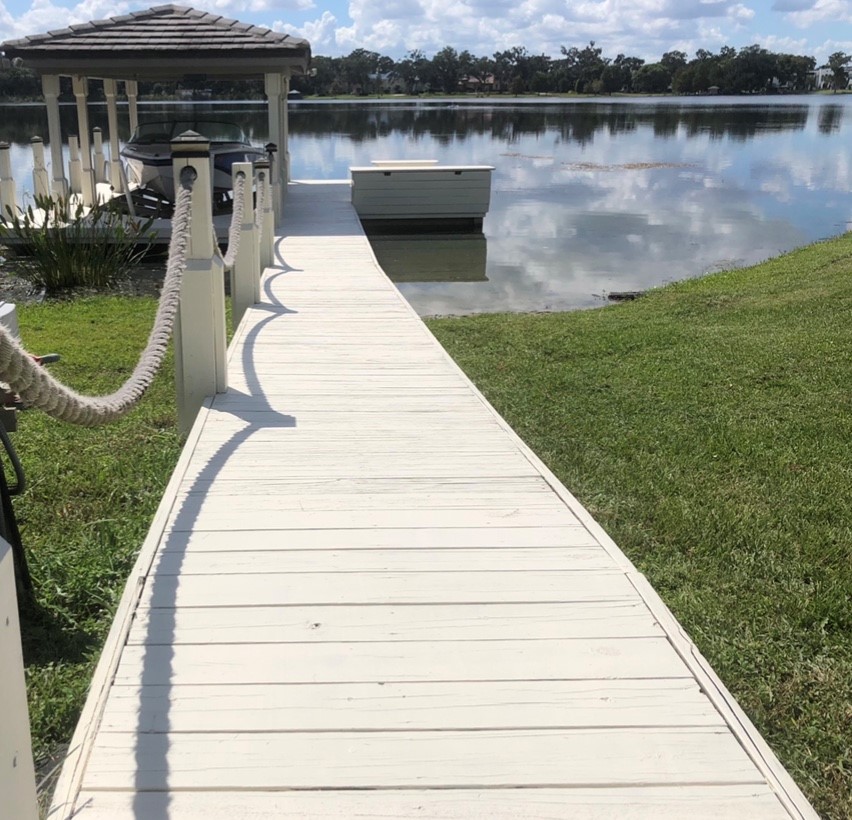Lakes are important parts of the ecosystem. Aside from providing essential freshwater to nearby wildlife, lakes themselves are complete ecosystems with complex relationships among organisms within and nearby. Unfortunately, many people and organizations only take action when lakes have reached detrimental states. This is not recommended and we’ll explain why continued lake maintenance is crucial.
Reasons for Continued Lake Maintenance
Some communities rely on lakes for food and water. Some lakes serve more recreational roles where people can swim, fish, and enjoy other recreational activities. All of these require the lake to be continually maintained to keep everyone safe.
Here are some reasons why continued lake maintenance is so important.
Controlling Algae
Algae are microscopic organisms that are able to photosynthesize just like plants. This means they use the energy from the sun to create their own food. Most algae are harmless and this group of organisms are highly beneficial to the lake ecosystem because, just like plants, they serve as primary producers and they also feed other organisms in the lake.
However, there are certain algae that can potentially be harmful to the lake. When the lake receives a large amount of nutrients, these algae proliferate rapidly. This phenomenon is called a harmful algal bloom (HABs).
These algae are extremely dangerous to the lake and nearby inhabitants. For one, algae can create a thick mat on top of the water surface that blocks light for other organisms underneath that also requires light. When these algae die, their decomposition also uses up the oxygen in the lake which then suffocates many other organisms.
Some can also produce toxic substances that can poison fishes in the lake. Nearby wildlife that happen to eat these poisoned fish are also poisoned as well.
For the people that live near the lake, they will be subjected to unappealing scents due to these algae. The water will also be unsuitable for drinking and the fish will be harmful to consume.
It is important to frequently remove dead or overgrown vegetation from the shoreline in order to prevent algae blooms. Decomposing vegetation that is not properly removed can cause further propagation of unwanted species.
For homeowners who choose to do the removal of the vegetation DIY, it is important to remember to contain the area in which you are removing the vegetation and fully remove it after killing it.
Maintain Water Quality
Lakes are bodies of water. This stands to reason that water quality is an essential factor to the health of the lake. There are a few things to look out for when making sure the water quality of the lake is safe for both the flora and fauna that live in it and for people doing recreational activities.
Aside from monitoring the algal levels in the water, people can also monitor the chemical composition of the water. For example, the heavy metal content of the lake can be monitored to make sure it does not reach dangerous levels. Organic elements such as nitrogen, phosphorus, and potassium can also be monitored as these are common causes for algae bloom to occur.
Large amounts of decomposing vegetation can create muck and diminish the water quality. It is important to constantly remove the dead vegetation on the shoreline in order to prevent eutrophic effects on the lake bottom
Control Erosion“
Erosion is a big concern for properties located on the shoreline of lakes. Over time, shorelines can erode, with more water slowly replacing land. This endangers the structure of the nearby property and is simply unsafe for its inhabitants.
By creating a well maintained native aquatic plant garden, you can control some of the erosion. But remember, it is important to maintain these species in order to prevent them becoming fuel for other unwanted species.
Prevent Bigger Issues
It is important to realize that uncontrolled vegetation along the shoreline can cause blockages that are harder & more expensive to remove later on. By letting the vegetation grow unchecked, you can end up having to dredge the lake bottom or require specialized machines to remove the root systems of well established vegetation.
Additionally, it can cause damage to your recreational vehicle. The submerged vegetation that is not visible to the naked eye, sometimes a film or sometimes whole strands of vegetation, can clog the engine by entering the intake lines of the vehicles.
Prevent Undesired Wildlife from Living on Your Shoreline
This is specially important if you have kids or pets unsupervised in the yard. As you can imagine, these dense vegetation will attract all sorts of snakes, alligators, spiders and wasps, among others. These vegetation are perfect shelter and breeding grounds for aquatic wildlife.
Diminishing Your Property Value
Unmaintained shorelines can quickly become unattractive. If you’re thinking of selling your lake property, a good way of driving up its value is to have a clear view and access to the lake
Conclusion
The reasons listed above are just a few, but they are highly important. Fortunately, these are situations that can be completely avoided with continued lake maintenance such as active monitoring, herbicide application, management of plants and water sampling. Continued lake maintenance allows lakes and nearby life to thrive to their fullest which subsequently benefits everyone involved.

